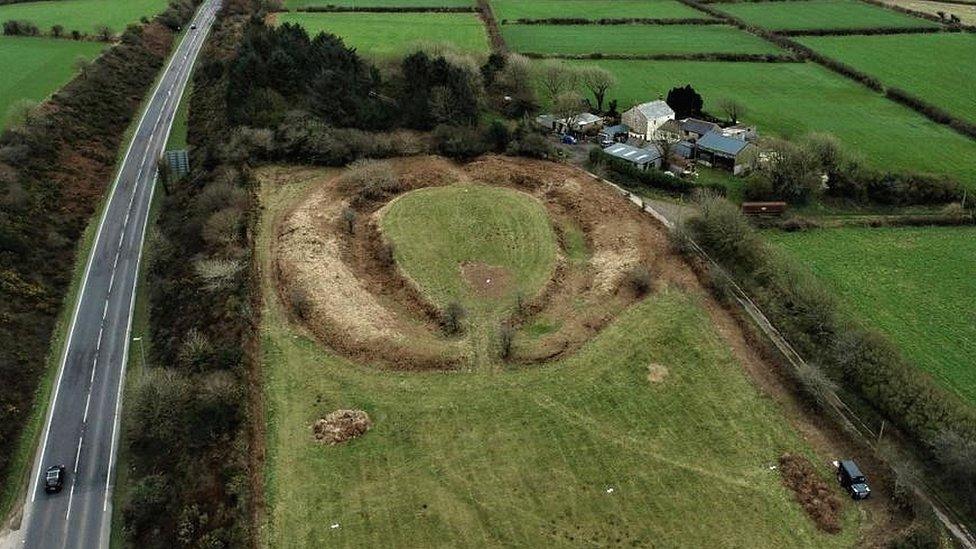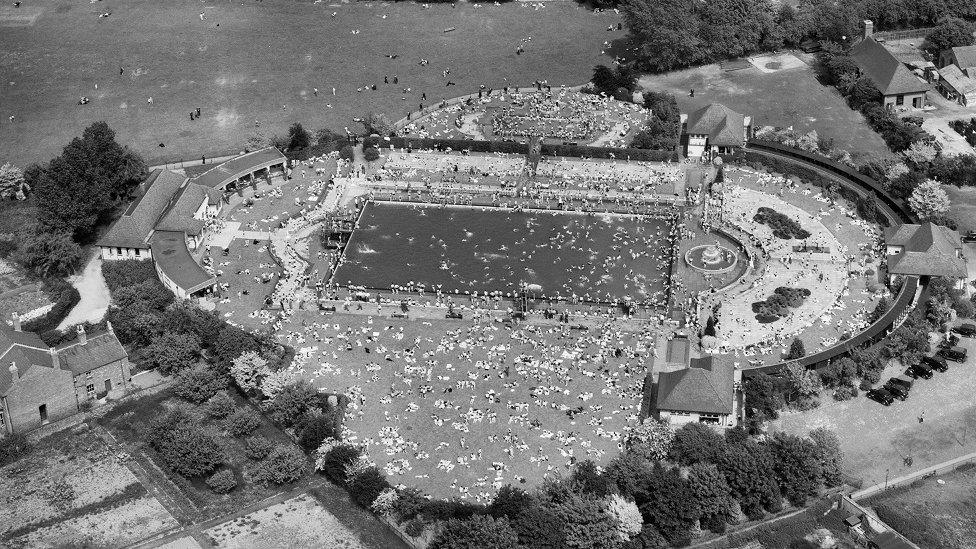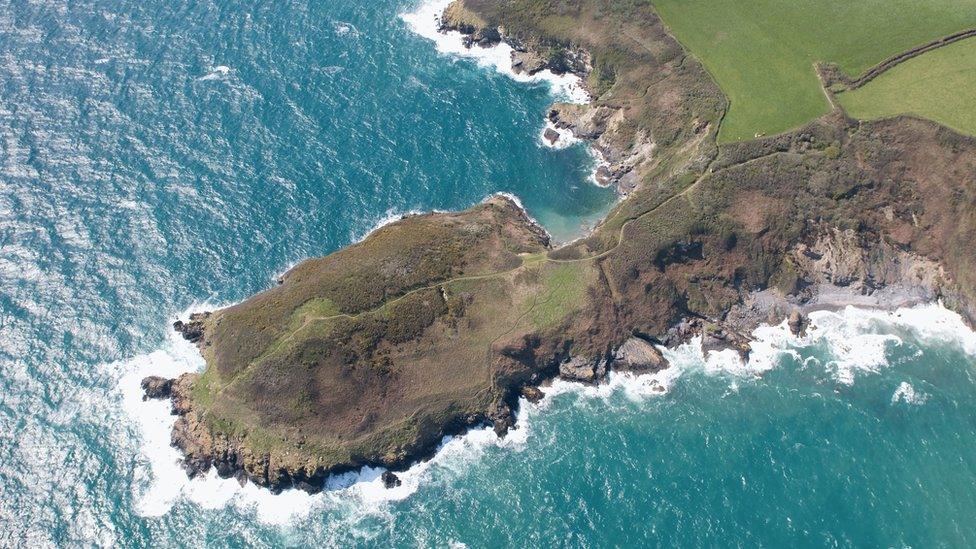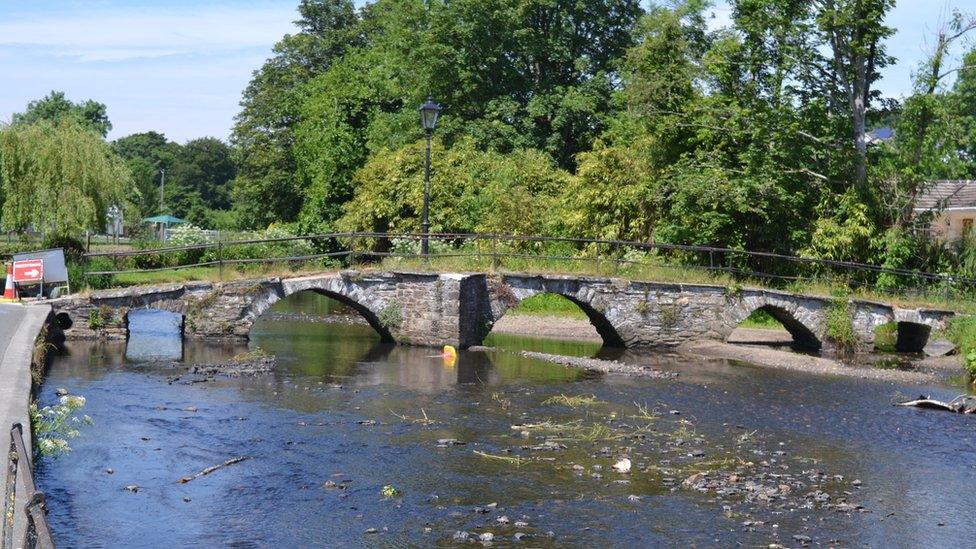Unknown stone circle found inside Cornwall Neolithic henge
- Published

The circle, marked out here by Historic England volunteers, was found during the site's first modern archaeological survey
A previously unknown stone circle has been found inside a Cornwall scheduled monument, a conservation group says.
The underground circle has been found inside Castilly Henge, near Bodmin, by Historic England (HE) and the Cornwall Archaeology Unit.
It was found during the site's first modern archaeological survey to better understand the area, HE said.
The site has now been fenced, allowing it to be grazed by animals without damaging the structure, it added.
The henge is one of 40 scheduled monuments protected by the Cornwall Area of Outstanding Natural Beauty.
The 225ft long by 205ft wide (68m by 62m) oval enclosure is believed to have been built during the late Neolithic period (circa 3,000 to 2,500 BC), forming an amphitheatre-like setting for gatherings and ritual activities, HE said.

Bracken and other damaging vegetation has been cleared from the monument
It was on Historic England's heritage at-risk register because its location made it difficult to look after, and its earthworks and part of the interior had been heavily overgrown with bracken, project bosses said.
The circle, composed of seven points, was likely, along with the henge itself, to have been "used for ritual activities", HE said.
It was found with ground-penetrating radar and earth resistance techniques, using small electric currents passed through the ground.
Volunteers co-ordinated by the archaeology unit cleared the site of vegetation, enabling Historic England teams to carry out its "first detailed topographic and geophysical surveys".
'Deeper understanding'
They also removed the bracken and other damaging vegetation, making the monument visible in the landscape again.
Ann Preston-Jones, from Historic England, said the research "has given us a deeper understanding of the complexity of this site and its importance to Cornish history over thousands of years".
Senior archaeologist Peter Dudley said 13 people gave 111 hours of their time "and now the monument is looking so much better".
Historic England said no further work was planned on the site, but its research was to be published in a report later this year.

Follow BBC News South West on Twitter, external, Facebook, external and Instagram, external. Send your story ideas to spotlight@bbc.co.uk, external.
Related topics
- Published22 March 2022

- Published12 May 2022

- Published10 May 2022

- Published4 November 2021
